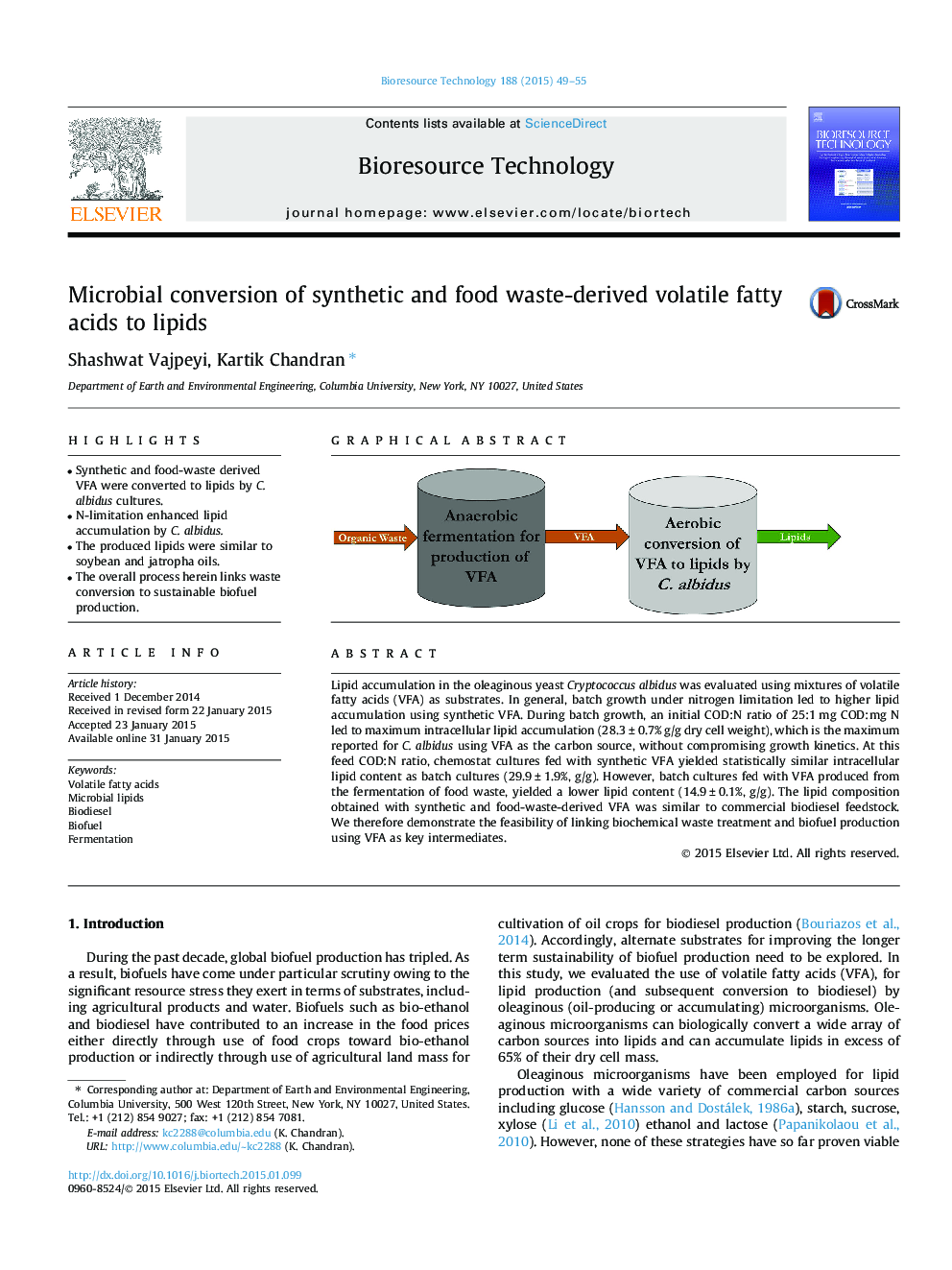| Article ID | Journal | Published Year | Pages | File Type |
|---|---|---|---|---|
| 679700 | Bioresource Technology | 2015 | 7 Pages |
•Synthetic and food-waste derived VFA were converted to lipids by C. albidus cultures.•N-limitation enhanced lipid accumulation by C. albidus.•The produced lipids were similar to soybean and jatropha oils.•The overall process herein links waste conversion to sustainable biofuel production.
Lipid accumulation in the oleaginous yeast Cryptococcus albidus was evaluated using mixtures of volatile fatty acids (VFA) as substrates. In general, batch growth under nitrogen limitation led to higher lipid accumulation using synthetic VFA. During batch growth, an initial COD:N ratio of 25:1 mg COD:mg N led to maximum intracellular lipid accumulation (28.3 ± 0.7% g/g dry cell weight), which is the maximum reported for C. albidus using VFA as the carbon source, without compromising growth kinetics. At this feed COD:N ratio, chemostat cultures fed with synthetic VFA yielded statistically similar intracellular lipid content as batch cultures (29.9 ± 1.9%, g/g). However, batch cultures fed with VFA produced from the fermentation of food waste, yielded a lower lipid content (14.9 ± 0.1%, g/g). The lipid composition obtained with synthetic and food-waste-derived VFA was similar to commercial biodiesel feedstock. We therefore demonstrate the feasibility of linking biochemical waste treatment and biofuel production using VFA as key intermediates.
Graphical abstractFigure optionsDownload full-size imageDownload as PowerPoint slide
